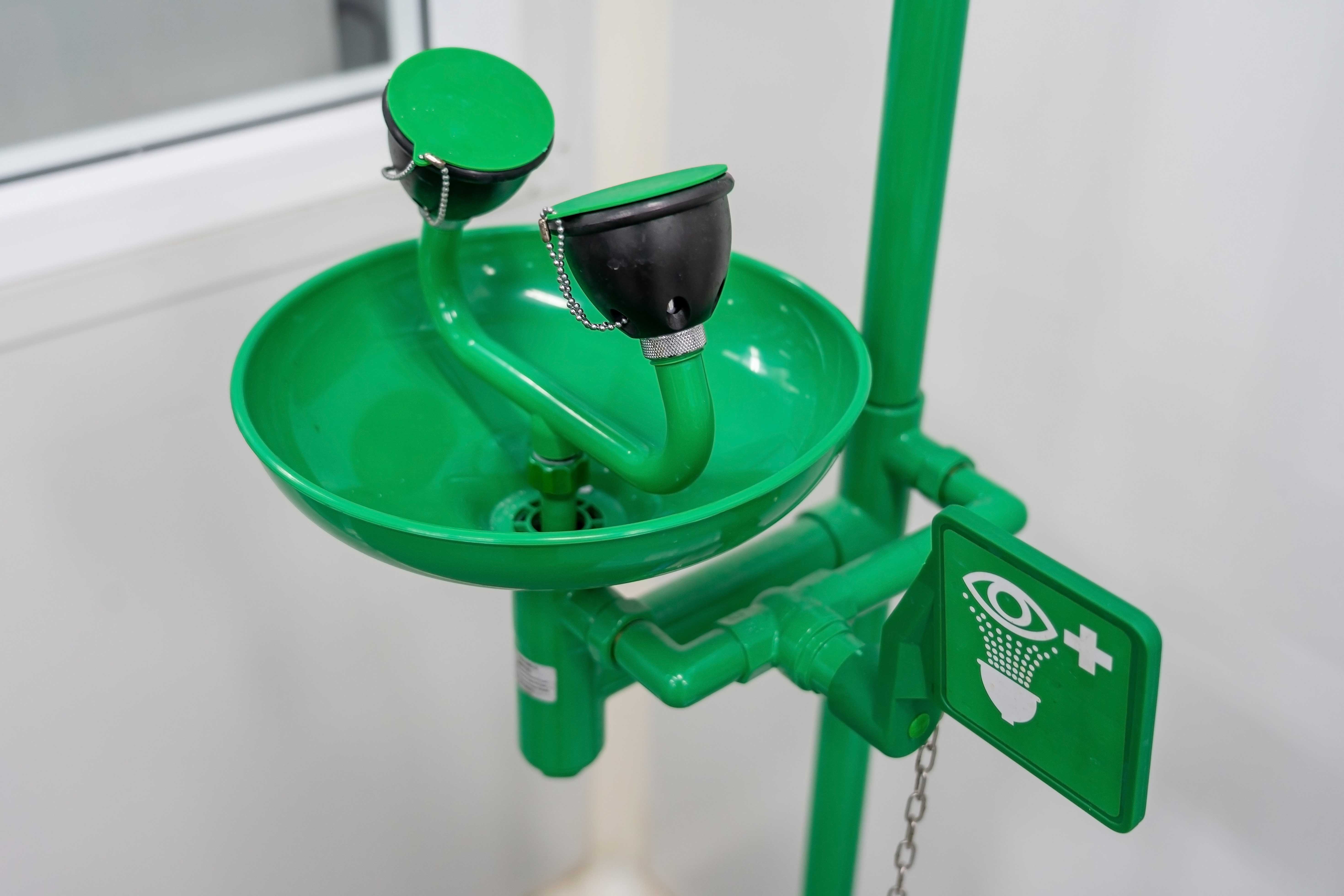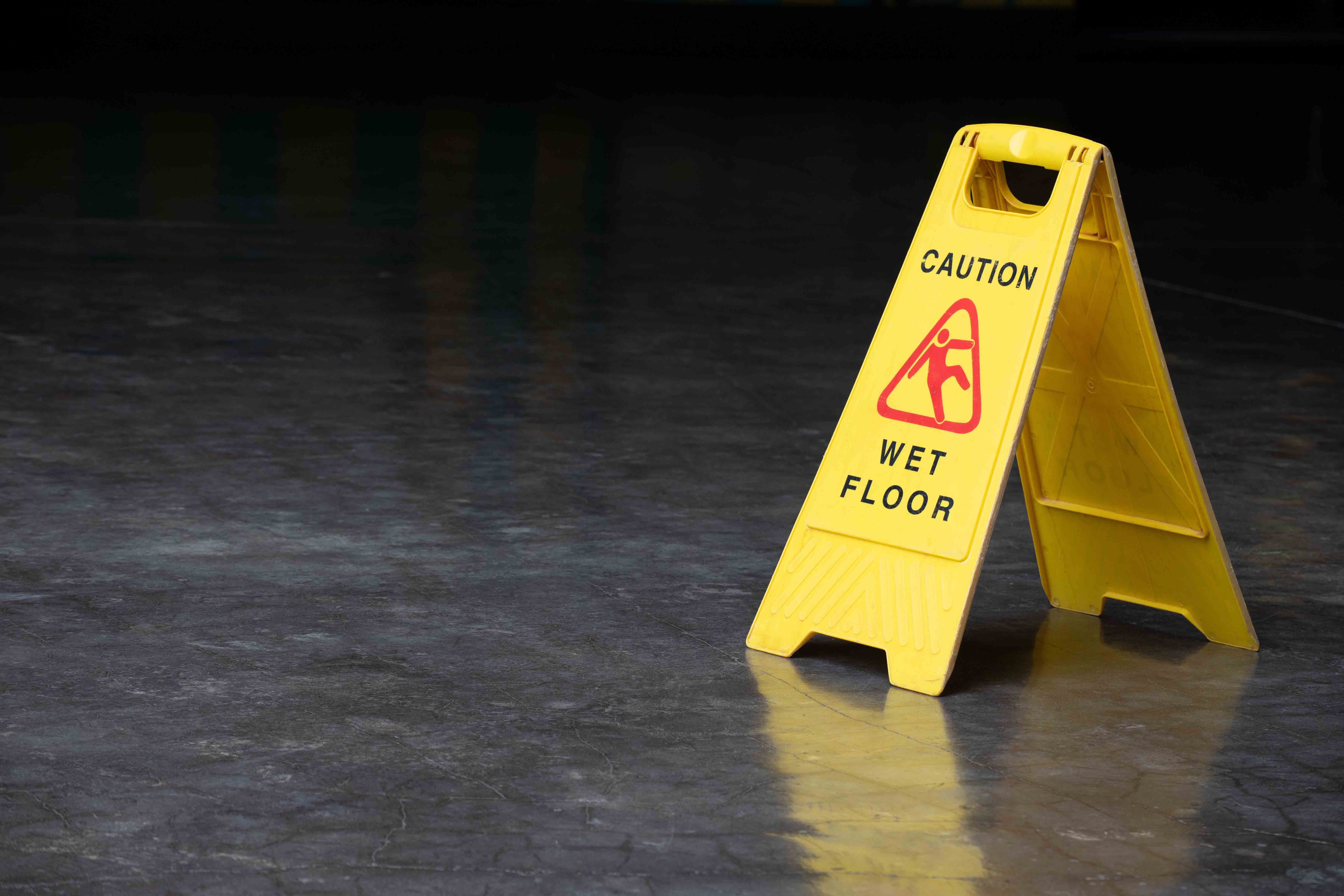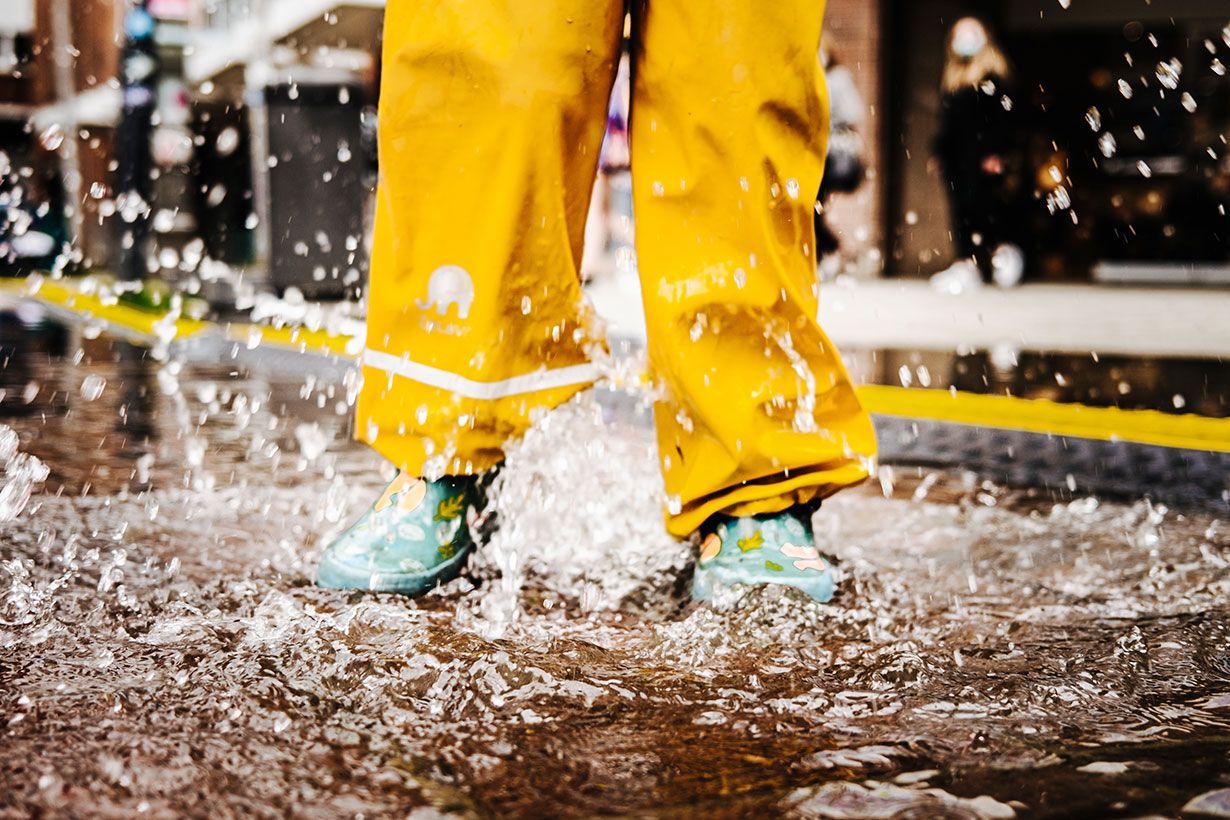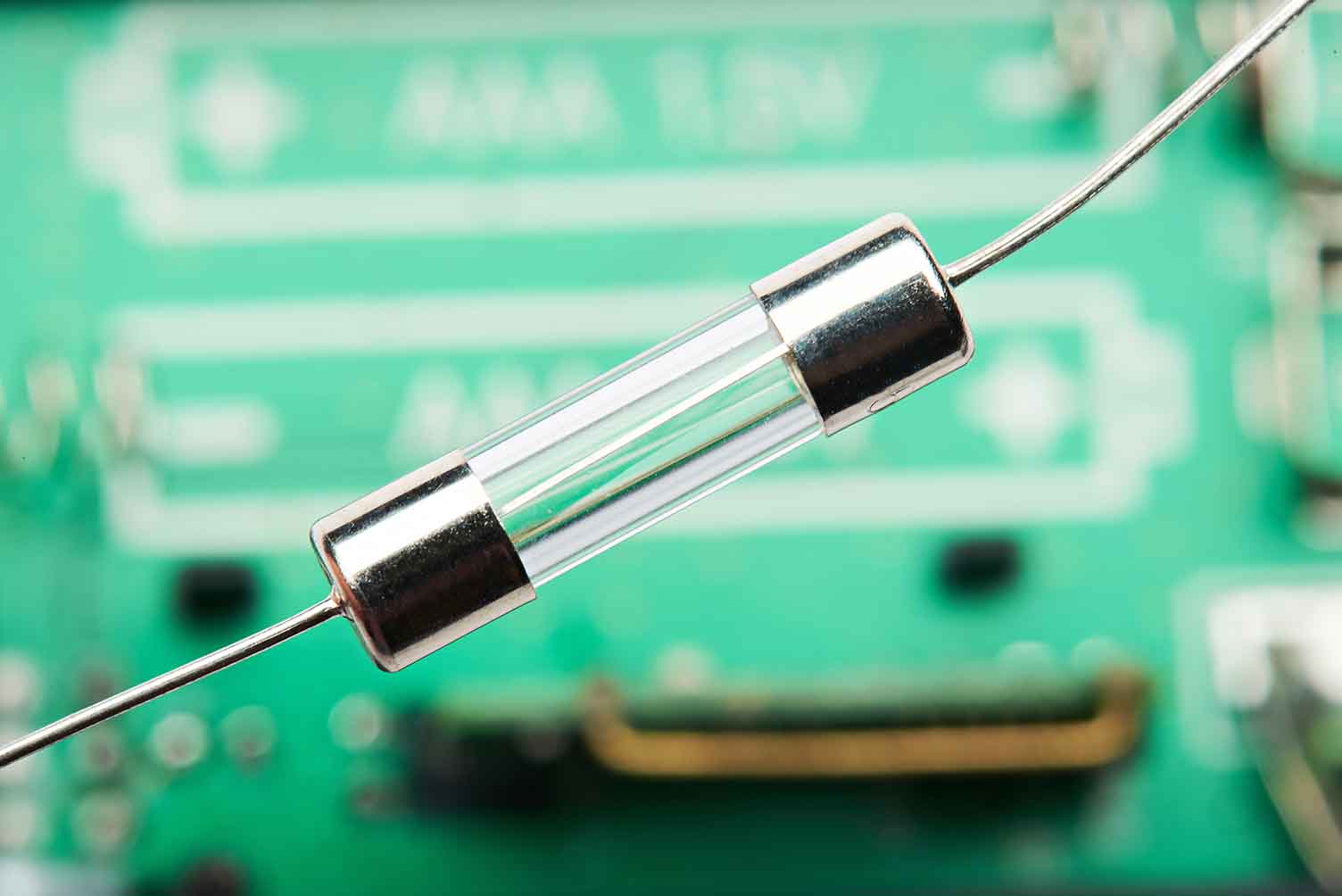

Emergency Shower and Eyewash Station Requirements
By Grainger Editorial Staff 5/31/20
Find out what OSHA and ANSI require for emergency showers and eye wash stations. Learn about the 10-second access rule, 15-minute flushing protocol, and key performance standards to help protect workers from chemical exposure.
Quick Tips #120
The Occupational Safety and Health Administration (OSHA) has two different types of regulations that address emergency shower and eyewash and eye/face wash station equipment needs. The first is a general requirement applicable to all facilities that require the installation of emergency shower or eye wash station equipment as a form of first aid [29 Code of Federal Regulations (CFR) 1910.151(c)]. The second type is specific to certain industries.
29 CFR 1910.151(c) states “Where the eyes or body of any person may be exposed to injurious corrosive materials, suitable facilities for quick drenching or flushing of the eyes and body shall be provided within the work area for immediate emergency use.”
The industries referenced in the second type of OSHA regulations include: Activities Utilizing an Open Surface Tank; Storage and Handling of Anhydrous Ammonia; Powered Industrial Trucks; Pulp, Paper and Paperboard Manufacturing; Telecommunications; Formaldehyde Handling; Hazardous Materials; and Construction Industry.
Both regulation types specify where and when emergency eye wash and shower equipment must be available. Neither, however, specifies minimum selection, installation, operation or maintenance requirements. OSHA refers employers to the American National Standards Institute (ANSI) and the International Safety Equipment Association (ISEA) ANSI/ISEA Z358.1 American National Standard for Emergency Eyewash and Shower Equipment standard as a recognized source for such guidance.
ANSI/ISEA Z358.1 is a national consensus standard that helps users select, install, operate and maintain emergency eyewash, eye/face wash and shower equipment. It was issued in 1981 and revised in 1990, 1998, 2004, 2009, and again in 2014. This Standard is part of the building code in locations which have adopted the International Plumbing Code (IPC). The IPC is in use or adopted in 35 states, the District of Columbia, Guam and Puerto Rico.
Emergency Eyewash, Eye/Face Wash and Shower General Requirements
Installation / Location:
- Must be accessible within 10-seconds of hazard, approximately 55-feet (consult a medical professional to determine the appropriate distance for harsh acids and caustics; high hazard = closer distance)
- Must be located on the same level as the hazard
- Path of travel must be free of obstructions—Appendix B5 clarifies that a step into an enclosure where emergency equipment is located is not considered an obstruction
- Location must be well lit and identified with a highly visible sign
- If shut-off valves are installed in the supply line for maintenance purposes, provisions must be made to prevent unauthorized shut off
Temperature
- Must deliver tepid flushing fluid—suggested temperature range of 60–100°F
Maintenance and Inspection
- Activate plumbed units at least weekly to verify proper operation
- Visually check self-contained units weekly to determine if flushing fluid needs to be changed or supplemented
- Inspect annually for compliance with ANSI/ISEA Z358.1 performance requirements
Training
- Instruct all employees in the location and proper use
Shower Requirements
There are two types of emergency showers:
- Plumbed Shower: An emergency shower permanently connected to a continual source of potable water
- Self-Contained Shower: A stand-alone shower that contains its own flushing fluid
Key emergency shower features and specifications include:
- Hands-free valve activates in one second or less and remains open until manually closed
- Plumbed unit delivers 20 gallons of water per minute for 15 minutes at 30 pounds per square inch pressure in the required pattern
- Self-contained unit delivers 20 gallons of water per minute for 15 minutes in the required pattern
- Height of water column is between 82 and 96-inches above the surface on which the user stands
- At 60 inches above the surface on which the user stands, the water pattern is at least 20 inches in diameter
- Center of the water pattern is at least 16 inches from any obstruction
- Easily located, accessible actuator is no more than 69 inches above the surface on which the user stands
- If provided, shower enclosure has a minimum diameter of 34 inches
Eyewash and Eye/Face Wash Station Requirements
There are two types of eyewash and eye/face wash stations:
- Plumbed station: An eye wash unit permanently connected to a continual source of potable water
- Gravity-fed (self-contained) station: A stand-alone eye wash device that contains its own flushing fluid that must be refilled or replaced after use
Key eyewash and eye/face wash station features and specifications include:
- Eyewash and eye/face wash controlled, low velocity flow rinses both eyes and is not injurious to user
- Water flow is sufficiently high to allow user to hold eyes open while rinsing
- Spray heads are protected from airborne contaminants - covers are removed by water flow
- Plumbed eyewash delivers at least 0.4 gallons of water per minute at 30 pounds per square inch pressure for 15 minutes
- Gravity-fed (self-contained) eyewash delivers at least 0.4 gallons of water per minute for 15 minutes
- Plumbed eye/face wash delivers at least 3.0 gallons of water per minute at 30 pounds per square inch pressure for 15 minutes
- Gravity-fed (self-contained) eye/face wash delivers at least 3.0 gallons of water per minute for 15 minutes
- Water flow pattern is positioned between 33 and 53 inches from the surface on which the user stands and at least 6- inches from the wall or nearest obstruction
- Valve actuator is easy to locate and readily accessible to user
- Unit washes both eyes simultaneously and covers area indicated on test gauge at no more than 8 inches above spray heads
Personal Eye Wash Requirements
A Personal Eye Wash is a supplementary eye wash that supports plumbed units, gravity-fed units or both by delivering immediate flushing fluid.
NOTE: Personal eye wash units do not meet the requirements of plumbed or self-contained eye wash equipment. Personal eye wash units can support plumbed or gravity-fed eye wash units but cannot be a substitute.
Drench Hose Requirements
A drench hose is a supplemental device consisting of a flexible hose connected to a flushing fluid that’s used to irrigate and flush eyes, face and body areas. Plumbed and self-contained options are available.
NOTE: Drench hoses may be considered an eye wash or eye/face wash if the device meets the performance requirements discussed previously.
Frequently Asked Questions
According to ANSI/ISEA Z358.1-2014, tepid is defined as a “flushing fluid temperature conducive to promoting a minimum 15-minute irrigation period. A suitable range is 60 to 100 °F.” Medical recommendations suggest flushing fluid at tepid temperatures be delivered to affected chemically injured tissue. Temperatures in excess of 100 °F have proven to be harmful to the eyes. Cold flushing fluid does provide immediate cooling after chemical contact, but prolonged exposure to cold fluids can affect the ability to maintain adequate body temperature. Information indicates that a temperature of 60 °F is suitable for the lower parameter for tepid flushing fluid without causing hypothermia to the user.
The intent of weekly activation is to ensure that there is flushing fluid supply at the head of the device, to clear the supply line of any sediment build-up that could prevent the flushing fluid from being delivered to the head of the device, and to minimize microbial contamination due to stagnant water. The activation duration depends on the volume of water contained in the unit itself and all sections of pipework that do not form part of a constant circulation system (i.e. “dead leg” portions). Water in these sections is stagnant until a flow is activated by opening a valve. The goal is to flush out stagnant water in the dead leg completely. Where mixing valves are used, both the hot water and cold water supplies to the valve must be considered.

Safety Management
6 Tips to Help Prevent Slips, Trips and Falls
Identify the fall hazards in your workplace and implement a fall safety program. Check out these tips from Grainger so you can mitigate risk.
![]() Our Latest KnowHow
Our Latest KnowHow
The information contained in this article is intended for general information purposes only and is based on information available as of the initial date of publication. No representation is made that the information or references are complete or remain current. This article is not a substitute for review of current applicable government regulations, industry standards, or other standards specific to your business and/or activities and should not be construed as legal advice or opinion. Readers with specific questions should refer to the applicable standards or consult with an attorney.















